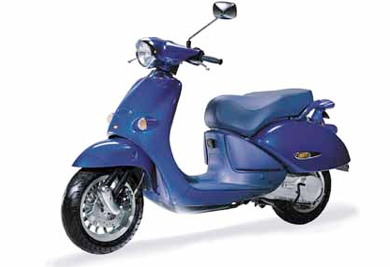Introduction
Aprilia - Mojito 50 Custom (1999–2001, ZD4PKB1)
The Aprilia Mojito 50 Custom (model years 1999 to 2001, ZD4PKB1) is one of several versions from the first Mojito/Habana generation. It represents classic Vespa-inspired styling, straightforward technology, and Italian charm for everyday use.
With its low profile, comfortable ergonomics, and retro appeal, it’s aimed at riders looking for a stylish and practical city scooter.
Model history
The ZD4PKB1 was produced alongside its sibling models ZD4PK00 and ZD4PKA1 from 1999 to 2001. Differences were mainly market-specific and related to equipment; the technical layout remained identical.
With the Mojito series, Aprilia embraced the retro trend of the time, positioning the model as a relaxed alternative to sporty 50 cc scooters.
After 2001, this generation was replaced by updated versions such as the “Mojito Retro” – but the ZD4PKB1 remains a respected classic among enthusiasts.
Technical details
The Aprilia Mojito 50 Custom (ZD4PKB1) features an air-cooled single-cylinder two-stroke engine with 49 cc and a carburetor.
Power output ranges from approx. 2.8–3.2 kW depending on restrictions, enabling a top speed of around 45 km/h in stock condition.
Power is transmitted via a continuously variable CVT gearbox with centrifugal clutch. Both electric and kick starters were included as standard.
The engine is known for being robust, low-maintenance, and ideal for urban commuting.
Chassis and brakes
The chassis uses a tubular steel frame with a telescopic front fork and rear swingarm with a mono shock absorber – designed for comfort and agility.
It features a 190 mm front disc brake and a rear drum brake – typical for its class.
With a dry weight of approx. 89 kg and low center of gravity, the Mojito offers safe, easy handling – even for beginners.
Most versions came with 10-inch wheels front and rear.
Features and design
The Mojito 50 Custom offers a flat step-through area, low seat height, and relaxed seating – ideal for smaller riders as well.
Classic features include a round headlight, chrome accents, retro-style mirrors, and an analog speedometer.
Underseat storage was standard; luggage racks and whitewall tires were available on selected versions.
Color options
Colors included black, red, ivory, and dark blue – depending on market and year. Some versions featured metallic paint and two-tone seats.
Chrome rims and whitewall tires were available on selected models to enhance the retro look.
No official limited editions are documented, but many units were customized individually.
